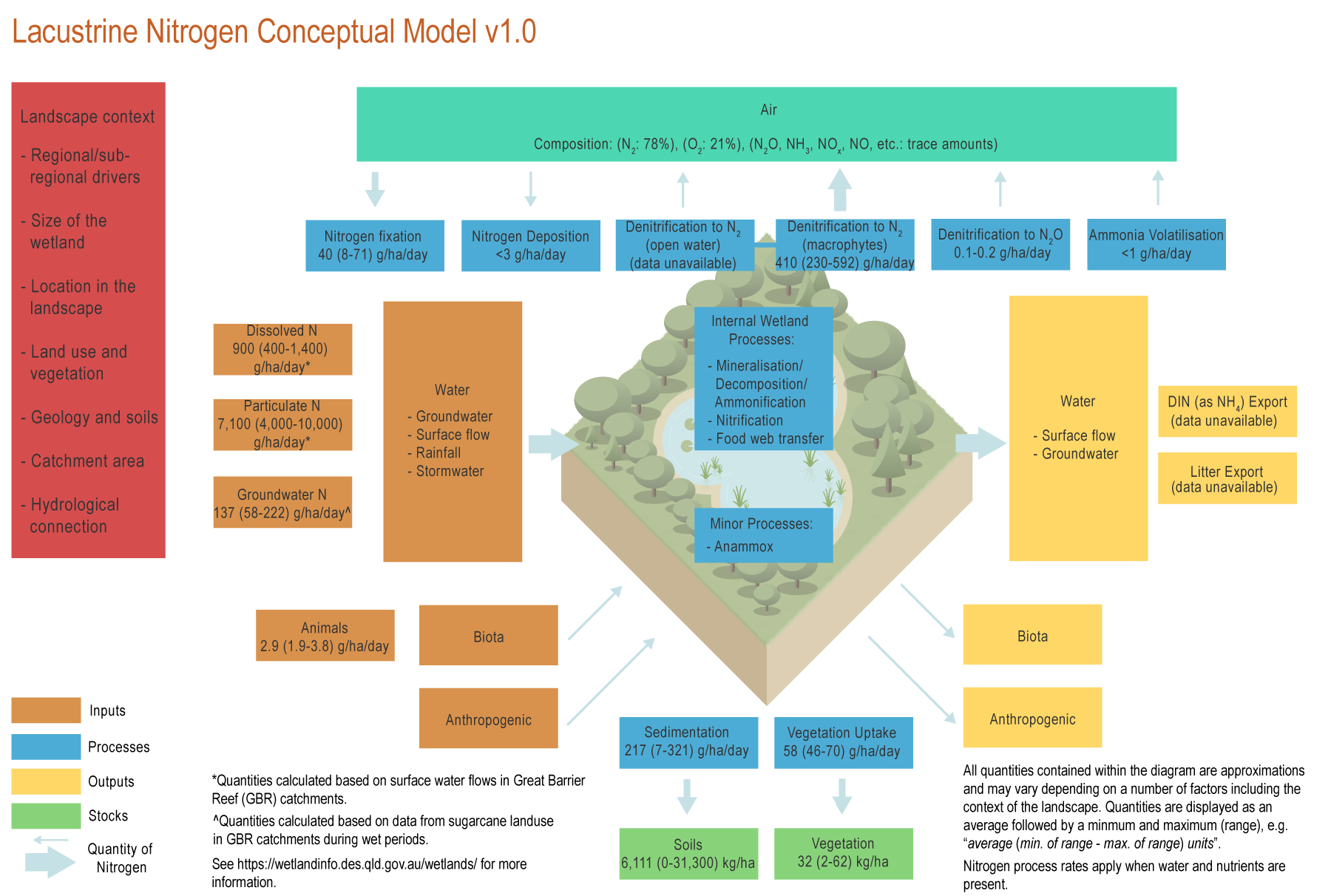|
|
LacustrineLacustrine – Effects
The conceptual models were compiled by researchers in collaboration with a wide range of stakeholders from Natural Resource Management groups, universities and government agencies and based on available scientific information[2]. Click on elements of the model or select from the tabs below The effects of nitrogen (N) on a wetland can vary depending on the inputs, processes, stocks and outputs of the wetland. GeneralGeneral nitrogen effects content can be found on the Pressures page. Lacustrine specificCoastal (floodplain wetlands and floodplains) ecosystems are influenced by seasonal conditions. First-flush run-off during the early wet season can result in inputs of elevated pollutant loads. During the dry season, wetland water quality can be affected by groundwater, irrigation and other localised run-off or cattle and other animal disturbance[3]. Nitrogen can cause effects on wetlands within the Great Barrier Reef catchments through eutrophication, weed and algae growth, low dissolved oxygen, and shifts in species composition including loss of sensitive species[3]. In the short term, excessive nutrients can also cause increase in plant and algal growth if suspended sediments are low. Excessive algal growth can affect invertebrate fauna by reducing light and suitable substrate and by causing toxicity of the water if cyanobacteria blooms develop. Increase in nutrients can also favour the growth of exotic weeds and floating weed mats[1]. The highest nutrient loads are generally delivered during the wet season, which can result in high biochemical oxygen demand (BOD) and hypoxic conditions which may cause fish kills. However, the largest detrimental impacts of degraded water quality will be seen in the dry season. During the dry season, water quality deteriorates because of increased algal blooms, hypoxia, and ammonium concentrations, which can cause fish kills[2]. References
Last updated: 2 August 2021 This page should be cited as: Department of Environment, Science and Innovation, Queensland (2021) Lacustrine – Effects, WetlandInfo website, accessed 8 May 2025. Available at: https://wetlandinfo.des.qld.gov.au/wetlands/ecology/processes-systems/nitrogen-concept-model/lacustrine/effects.html |

 — Department of the Environment, Tourism, Science and Innovation
— Department of the Environment, Tourism, Science and Innovation

